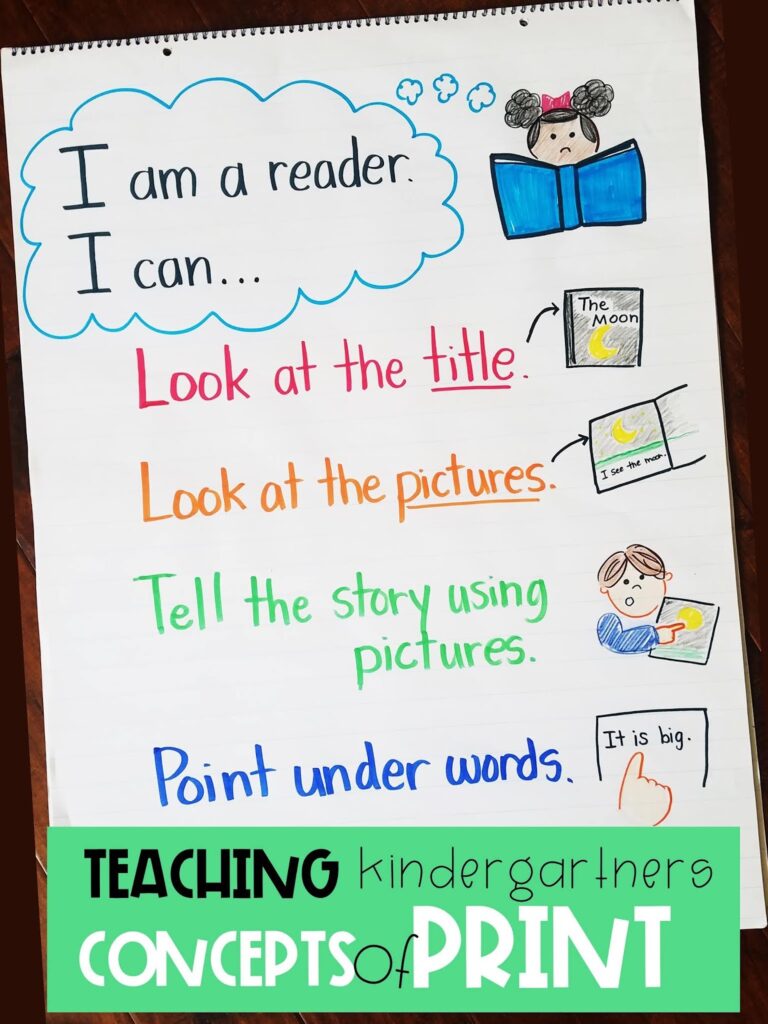Concepts of Print
Concepts of print refers to the understanding of how print and books work. These skills are a critical prerequisite to teaching children to read.
Concepts of print include:
-How books are read
-Identification of parts of print
-Print orientation
-Parts of a book
Kindergarten reading instruction sometimes begins with the assumption that students have an understanding of most concepts of print. Unfortunately, students who come to school without these skills can fall behind right away if the direct instruction and modeling of these important skills is overlooked.
A strong foundation in early literacy skills including direct instruction in Concepts of Print can ensure reading success in later years. (C.Johnson, 2015). Early onset of Concepts of Print skills correlated to a stronger reading ability in later years. Tizard (1988) stated that CoP awareness at the age of 4 was a strong predictor of reading achievement at ages 7 and 11.
The main Concepts of Print skills include the concepts of a book and understandings of print. I will go in depth with each of those concepts below.
Concepts of a book refers to the understandings of how books work. Children should understand where the front cover, back cover, and title page are in a book. They should know how to handle books properly, hold books with correct orientation, and turn the pages sequentially. They should understand the job of the author and illustrator. They should follow pages in a book from left to right. They should understand that words are read from top to bottom on a page.
Understandings of print refers to just that– understanding how print works. Children should understand that the print in a book conveys the story or message. They should understand the differences between words, letters, and punctuation. Words are separated by spaces. They should understand that sentences are a complete thought. That they begin with a capital letter and end with punctuation. They should be able to identify the first letter and last letter of a word, and the first and last word in a sentence. They should be able to point to words with 1:1 correspondence.
We as teachers cannot ignore the importance of direct instruction in Concepts of Print as the early onset of reading instruction in our classrooms. But, how? What exactly do I need to teach my students? How do I make sure that I’m providing them with instruction on all concept of print skills? Where do I begin teaching my students how to read?
Little Readers & Thinkers: Concepts of Print provides you with 14 days of strategic and explicit instruction in all Concepts of Print skills. It provides you a framework of knowledge of what your students need to learn, the progression of skills that makes sense for kindergartners, and the specific teacher language that can be used to teach.
The lessons in this unit follow a traditional Reading Workshop format: mini-lesson, practice, and share. The lessons can be taught in either a whole group or small group format.
Teachers, let me help.

Join my email list and receive a free Guided Reading Teacher Toolkit.
Thanks for signing up. Check your email to confirm and get your free Guided Reading Teacher Toolkit. Once you find the email, drag it into your primary inbox, so that way you won’t miss out on more ideas for your classroom. Together, we’ve got this!







